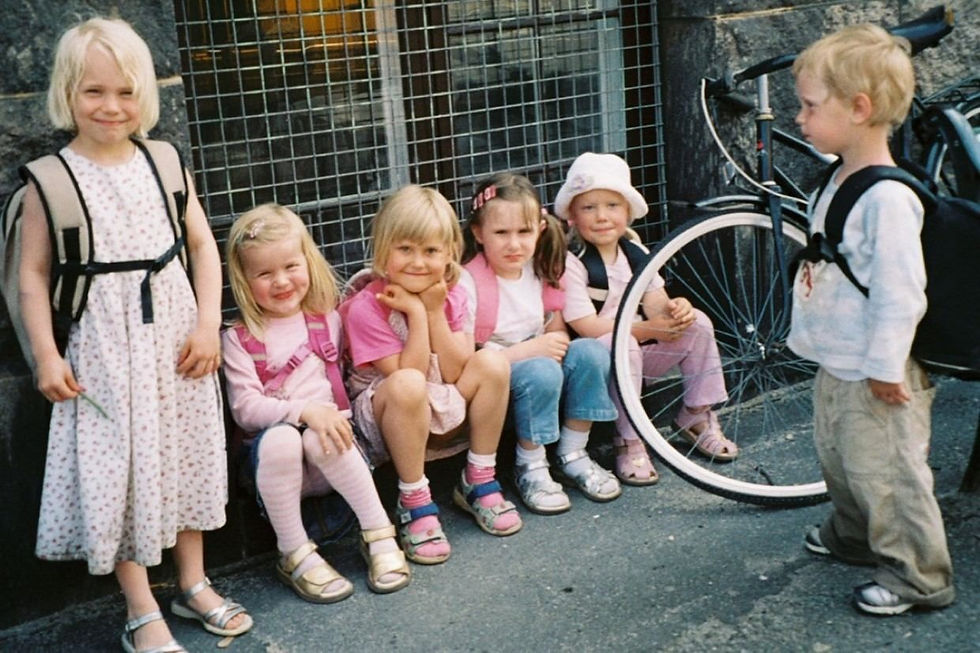
For many years, Denmark has been in the top countries where people feel the happiest. Parents from other countries, who are less fortunate with a sense of joy, are wondering: “Do the Danes have a special parenting style that turns happy kids into equally happy adults?” It turns out there is. Learn from experience - and your children will also smile more often.
▪️Emotions: respect and acceptance
The Danes educate children in empathy for other people in joy and in sorrow. In any situation, kids are taught to sympathize and help if necessary. This implies another feature: the inhabitants of the "happiest country" value the ability to work in a team more than the ability to "make a star out of yourself." Therefore, the foundation of relationships is respect for oneself, for others and a sense of equality in relation to each other.
Parents in Denmark do not protect their children from encountering "difficult" emotions, they teach them not to ignore their own and other people's experiences. Secretiveness is also not encouraged: the child can show any feelings if he wants. The Danes quite calmly read Christian Andersen's fairy tales to their children, in which there is not always a happy ending. Real life is also not woven of golden threads, they say. Scary stories do not embitter children. Little Danes will always be reminded that anger breeds anger, and kindness and calmness are the only true guide.
▪️Game: trust and do not be afraid (not suitable for everyone)
In Denmark, play is considered an important activity in a child's life, during which he can learn much more than in many courses and classes. Games offered by adults are often built into learning.
It is known that in Denmark, unlike the United States, there is no principle of "the rule of safety for children." That is, on holidays, children, together with adults, can easily make a fire even on playgrounds, without worrying about perimeter fences, the presence of firefighters or policemen. In schools, students light candles on the windowsills, and this is not condemned by anyone.
▪️Taboo on corporal punishment and ultimatums
In Denmark, physical punishment has been criminalized by law since 1984. Parents rarely use even an ultimatum, because it does not imply a mutually beneficial solution to the situation.
Why don't parents in Denmark practice strict prohibitions with or without? Firstly, this is how people lose their closeness to children, because threats and children's fear alienate family members from each other. Secondly, because of this, parents lose authority in the eyes of the kids. The Danes are sure of this, therefore they sacredly observe the rule of humane education.
▪️More explanation
Despite the lack of punishment, the Danes do not allow children to "walk on their heads". The rules are set very clearly. At the same time, children are constantly explained why they are expected to behave in a certain way, why certain norms exist, and why they need to be followed. In other words, the child is perceived as an equal, as one who requires knowledge, and not continuous control and moralizing.
▪️Secret "fifth point"
He is in the culture of communication. The Danes, like no one else, know how to appreciate the slowness and simple human joys. Therefore, in the happiest country in the world, everyone knows the cherished word Hygge. It means creating a warm atmosphere in the house and enjoying the joy of life next to good people.
Comfort is often symbolized by the Danes with a large table where relatives gather and discuss a variety of life issues - important and not so important. Such warm communication over lunch or dinner is one of the greatest values. So children from an early age absorb the atmosphere of peace, slowness and unconditional love. And how often do we allow ourselves to get together for dinner, not to watch TV and not to hurry anywhere? Let's teach our children to simple, but so important traditions.

Comments